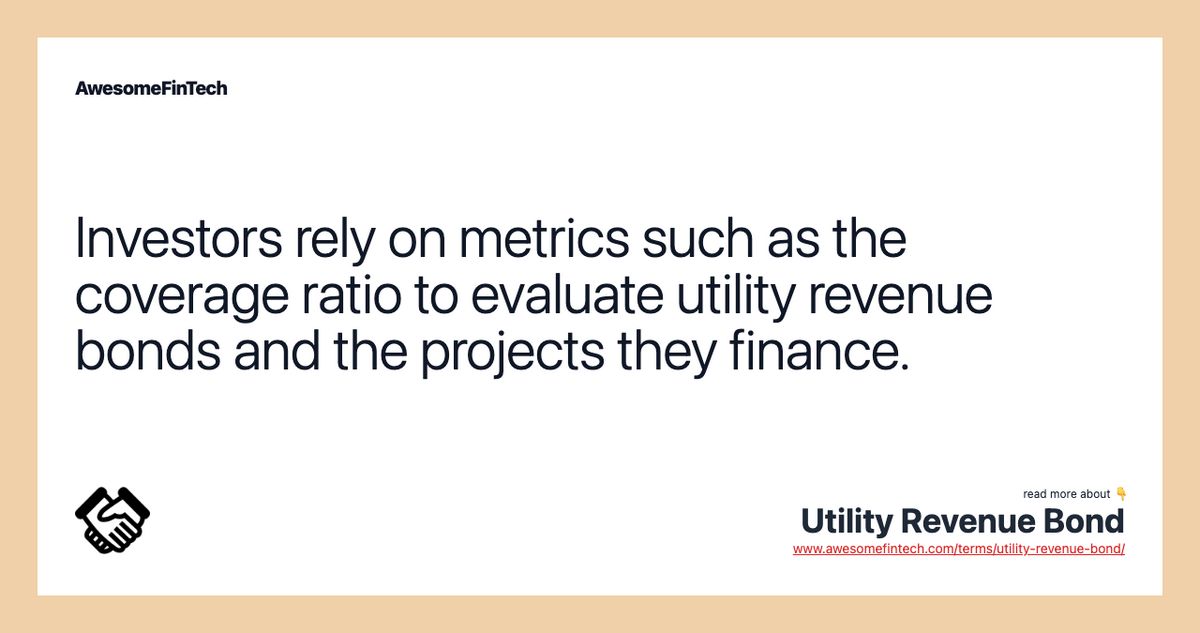Utility Revenue Bond What It Is How It Works

Contents
Utility Revenue Bond: What It Is, How It Works
What is Utility Revenue Bond?
A utility revenue bond, also known as an essential service bond, is a type of municipal bond issued to finance a public utility that repays bondholders directly from project revenues rather than a general tax fund.
Key Takeaways
- A utility revenue bond is a type of municipal bond issued to finance a public utility project that repays investors directly from project revenues.
- Due to the necessity of the services they provide, utility revenue bonds often feature a net revenue pledge.
- Investors rely on metrics such as the coverage ratio to evaluate utility revenue bonds and the projects they finance.
Understanding Utility Revenue Bond
A utility revenue bond funds capital projects in areas essential to public services including hospitals, fire service, water and waste treatment facilities, and improvements to the electrical grid. These services generate revenue through customer fees, which can service the debt.
Revenue bonds come with either a gross revenue or a net revenue pledge. A gross revenue pledge gives bondholder payments priority over operational or maintenance costs incurred by the project. A net revenue pledge allows for the disbursement of administrative expenses and upkeep costs before satisfying obligations to bondholders.
Utilities deliver essential services such as water and electricity. Due to the necessity of these services, utility revenue bonds often feature a net revenue pledge, as upkeep must be implemented to maintain them in good working order.
Utilities may also be required to maintain a specific revenue-to-expenditure ratio. The inclusion of debt repayment as an expense, and the ratio often supports customer rate increases for public utilities.
Paying Back Utility Revenue Bonds
Municipal bonds repay bondholders through either municipal taxation, as in a general obligation bond, or through revenue bonds. Revenue bonds derive income from the capital project. The issuer of general obligation bonds guarantees the repayment of debt via any means necessary. To collect funds, the issuer can raise taxes, issue another round of bonds, or even sell physical assets. The issuer is not constrained to a single revenue stream to satisfy obligations. Investors should be aware of this distinction and can use it as they build a diversified, fixed-income portfolio.
Other factors come into play when credit ratings agencies or investors evaluate utility revenue bonds and the projects they finance. The coverage ratio determines expected revenues to principal and interest obligations. Population size and trends can provide an idea of future revenue growth or decline for a utility project.
Customer concentration describes the mix of consumers whose usage fees support debt repayment. If a small number of consumers use a significant portion of a public utility’s service, it may lead to risk for the viability of that project’s revenues.


